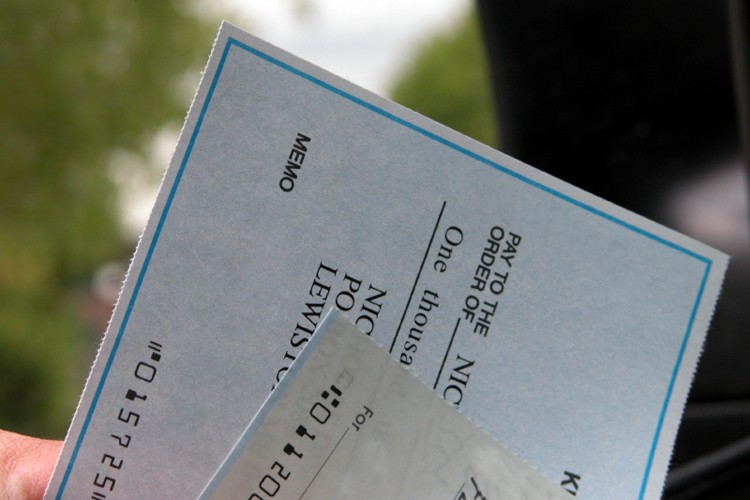Portfolio Rebalance Weighing Risk v Income US News
Post on: 29 Май, 2015 No Comment

Investors are looking at how savings and investments stack up against future monthly income needs.
The start of a new year is a natural time to make smart financial resolutions. Last year’s equity markets provided a thrill for investors, with the Standard & Poor’s 500 index up 12 percent for the year. Although the market’s success in 2014 may lead some to have tunnel vision on stocks this year, what investors should be focused on now is how to create a balance between the risk (and potential upside) of the equities in their portfolios and their need for predictable future income.
So, as 2015 gets underway and financial resolutions are defined, ask yourself, “What is my risk capacity?” as you consider making changes to your portfolio. Equity “mania” and low interest rates have led flows away from fixed income. Although the market remains strong, asking smart questions and anticipating that the market could shift will help you position yourself for the long term.
Consider when interest rates may rise, whether there’s an equity correction around the corner or how falling oil prices may impact the market. Although you would need a crystal ball to know how those scenarios will play out, portfolio diversification can help investors stay on track and avoid having an equity-focused portfolio turn riskier than intended.
In 2014, many investors took money out of fixed-income vehicles, such as bonds, treasuries and money-market securities or simply reallocated funds that would have been invested in those vehicles, in order to fund additional investments in equities. The “flight” to equities is understandable, as investors viewed uncertainty about when interest rates would rise as a threat to bonds.
Unknowingly, these investors also increased their risk exposure by focusing on the short term, and taking money out of vehicles intended for long-term investing. It’s a common assumption that fixed income is for older investors. The thought is that, as you approach retirement, you should lower your risk profile. Even though that is true, and it’s important to adjust your portfolio allocation based on your life stage, it is a mistake to think fixed-income investments have no place in more “youthful” portfolios.
Having the right balance of fixed income in any portfolio could help you take advantage of today’s market, but also manage risk (and later, your need for income) when it comes to investing for the long term. After all, fixed-income investments. such as corporate bonds or annuities, should be looked at as long-term holdings designed to provide the opportunity for a fixed stream of income. Note, however, that when investing in bonds, you still need to be careful with credit-default risk and interest-rate risk.
Of course, as with any investment, the key is to find the right option for your risk tolerance. For example, many people tend to chase higher yields through riskier, lower-rated bonds without realizing the investment is beyond their risk capacity. Consider the potential for generating reliable income from higher-rated individual bonds or bond funds. Looking only at interest rates and ignoring risk can be detrimental to your portfolio. For the average investor, investments should be looked at based on their objectives for long-term security and income streams.

Incorporating the proper balance of fixed income in your portfolio addresses the need for predictable income in retirement. Although stockpiling money to hit your big nest egg number has historically been how investors prepared for retirement, a shift is occurring. The focus has moved toward understanding where one’s savings and investments stack up against future monthly income needs.
Approaching investing and savings with a focus on a monthly paycheck in retirement puts retirement readiness in a more useful, actionable context. In fact, knowing the future monthly income produced by savings would have a significant impact on confidence and control for more than 80 percent of working Americans, according to 2014 data from Voya Financial. Fixed-income vehicles can be some of the most reliable sources for funding that retirement income stream. particularly in an environment in which old standbys like pensions are disappearing.
A portfolio that may serve investors best over time should shift the allocation of bonds, equities and other securities to address current risk appetite and anticipated future income needs. The start of a new year or a life event, such as getting married, having children or changing jobs, are critical times to review a portfolio allocation.
With potential new economic realities around the corner, such as rising interest rates, carefully consider the impact on your investment choices. Not only will strategically rebalancing your portfolio help you get, or stay on your path to retirement readiness, it will also serve as a reminder to stick to a plan and keep the temptation to time the markets at bay.
Tom Halloran is president of Voya Financial’s broker-dealer, Voya Financial Advisors, Inc. Halloran has over 25 years of experience working with financial advisors in various product, marketing and sales leadership roles. With a vision to be America’s Retirement Company, Voya Financial is composed of premier retirement, investment and insurance companies serving the financial needs of approximately 13 million individual and institutional customers in the United States. Voya Financial Advisors is a top-tier broker-dealer with over 2,400 registered representatives across the country.














